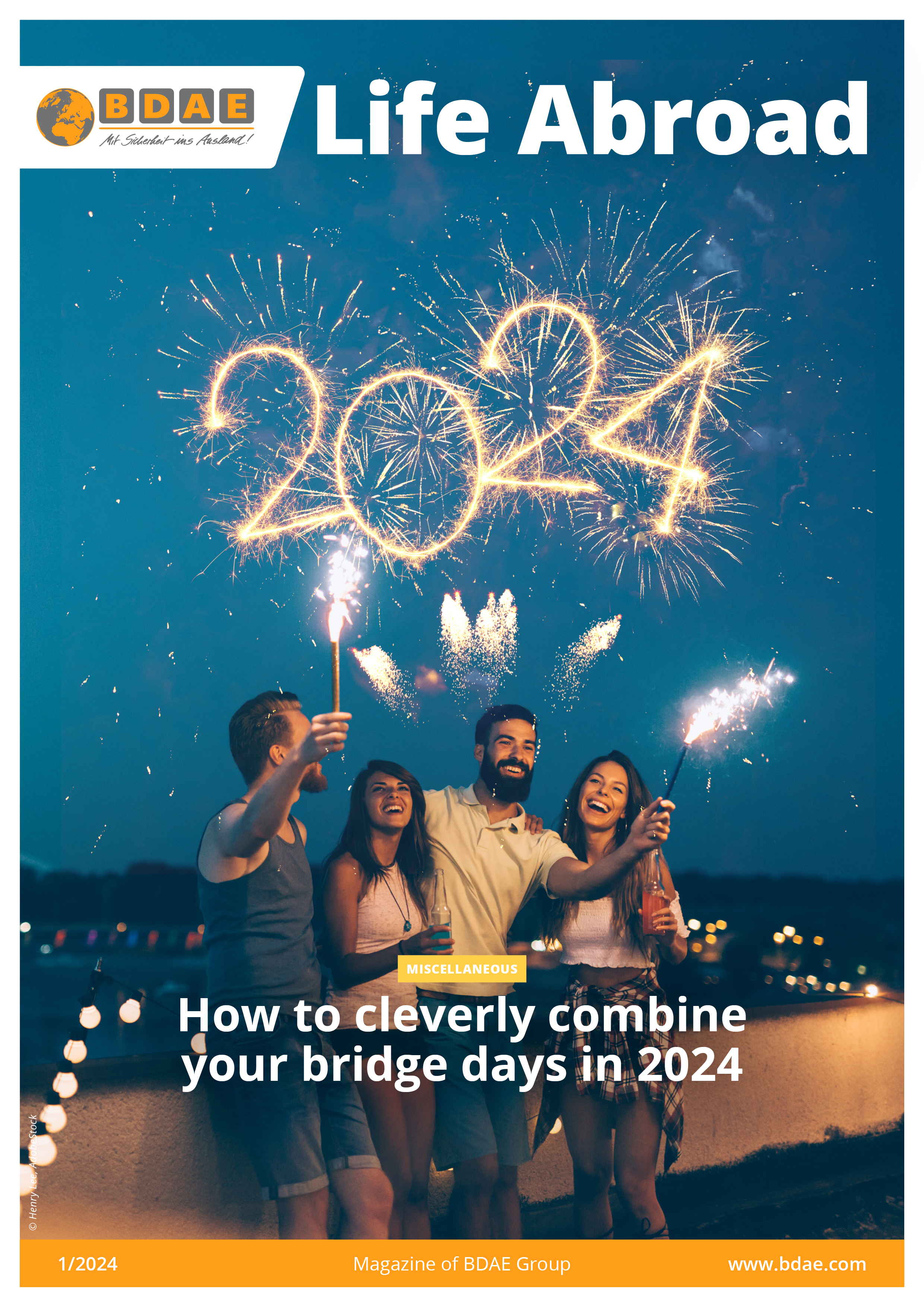Bleisure Travel: Combining business trips and holidays
Relaxing on the beach for a few days after a time-consuming conference or exploring the destination of the business trip at your leisure - more and more companies are offering their employees the opportunity to combine business trips with holidays. The combination of business and leisure is thus becoming bleisure.
9 out of 10 business travellers have the opportunity to practice Bleisure Travel
The results of the "Chefsache Business Travel" study, which has been conducted regularly for ten years by the Travel Management Companies in the German Travel Association (DRV), speak for themselves: 83 per cent of employees take advantage of the opportunity to combine business trips and holidays when they have the chance. And 89 per cent do. Just over half of companies (53 per cent) cover travel costs in full, while only 28 per cent of business travellers have to contribute to travel costs.
Why employees use Bleisure Travel
An attractive destination is the decisive factor for employees to take advantage of the Bleisure Travel offer. Beaches, sights or culture make them want to stay a little longer. However, a holiday must also feel like a holiday, which is why it is important for 40 per cent of those surveyed that there are no pressing professional challenges immediately after the business trip. 34 per cent of respondents cite relaxation as a reason for using bleisure travel. With regard to the different age groups, 41% of business travellers aged 40 and over are more likely to be influenced by the weather when choosing a bleisure trip, while 39% of those aged under 40 are more likely to want to save the additional arrival and departure time that would otherwise be lost on holiday.
"More and more companies are recognising the benefits of bleisure travel. This not only increases employee satisfaction and motivation, but also makes the company more attractive as an employer. This pays off in the battle for talent," says Andreas Neumann, Managing Director of ADAC Reisevertrieb. "The environment also benefits from bleisure travel, as the total number of trips taken is reduced. Companies can rely on the support of business travel agencies to ensure successful implementation. For example, they offer advice, travel expense management and booking tools that enable employees to adjust their travel plans independently and add leisure options."
Need to optimise climate protection for business trips
In addition to the Bleisure model, there are other incentives for employees to reduce CO2 emissions. The provision of a company car with an electric drive is offered by 47 per cent of the companies surveyed and 37 per cent reimburse the cost of a railcard. This means that 35 per cent of business travellers choose more climate-friendly modes of transport when it makes sense to do so.
However, only one in five companies (19 per cent) has a binding guideline for employees on how many CO2 emissions per capita may be caused by business trips. There is also a lack of consistent travel guidelines for business travellers that control the choice of means of transport. Half of the companies surveyed attempt to offset the carbon footprint caused by business travel through so-called Scope 3 CO2 reduction certificates. However, this model has been criticised as there are no internationally uniform standards and much of the information is not transparent. Experts emphatically emphasise that carbon offsetting can only be the last step, as the focus must be on avoiding and reducing CO2 emissions in order to drive forward climate protection.

